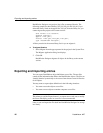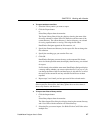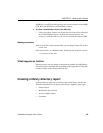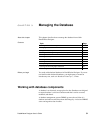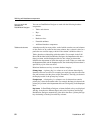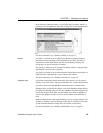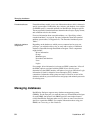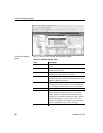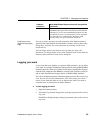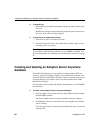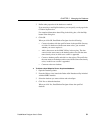
Managing databases
54 DataWindow .NET
Extended attributes
Extended attributes enable you to store information about a table’s columns in
special system tables. Unlike tables, keys, indexes, and database views (which
are DBMS-specific), extended attributes are DataWindow Designer-specific.
The most powerful extended attributes determine the edit style, display format,
and validation rules for the column.
For more information about extended attributes, see “Specifying column
extended attributes” on page 66. For more information about the extended
attribute system tables, see Appendix B, “The Extended Attribute System
Tables.”
Additional database
components
Depending on the database to which you are connected and on your user
privileges, you might be able to view or work with a variety of additional
database components through DataWindow Designer. These components
might include:
Driver information
Groups
Metadata types
Procedures and functions
Users
Logins
For example, driver information is relevant to ODBC connections. It lists all
the ODBC options associated with the ODBC driver, allowing you to
determine how the ODBC interface will behave for a given connection. Login
information is listed for Adaptive Server Enterprise (SYC) database
connections. Information about groups and users is listed for several of the
databases and allows you to add new users and groups and maintain passwords
for existing users.
Managing databases
DataWindow Designer supports many database management systems
(DBMSs). For the most part, you work the same way in DataWindow Designer
for each DBMS, but because each DBMS provides some unique features
(which DataWindow Designer makes use of), there are some issues that are
specific to a particular DBMS. For complete information about using your
DBMS, see Connecting to Your Database.



